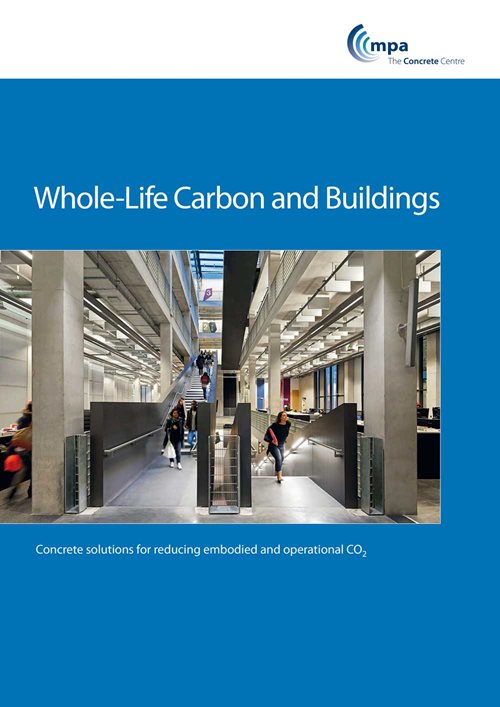Embodied carbon of structural frames
Most construction methods have similar embodied CO2 (eCO2). The variation between them is small compared with the variability arising from calculation method and the reductions possible through concrete material specification. Having chosen a design solution, the structural engineer can assist in reducing a typically sized building’s eCO2 by as much as 100kgCO2/m2 which, for a 10,000m2 building, equates to the personal eCO2 of a lifetime of goods and services for a UK citizen.
The research, carried out by Arup and commissioned by The Concrete Centre, focused on the structures of three building types – commercial, hospital, school buildings – and compared the eCO2 impacts of different materials and structural frame solutions. Schemes were developed for flat slab, insitu and precast, post-tensioned flat slab, composite, steel and precast, and Slimdek. Arup also examined how the choice of structural frame can affect the impacts across the whole building for items such as construction, cladding, substructure and fit-out. M & E are excluded. All the buildings were medium rise and were reasonably regular in layout. In all 20 different structural solutions were evaluated across the three building types in order to determine typical values for ‘cradle-to-site’ eCO2.
It was important for this research that the focus was on the eCO2 of the structural frame only. The question was, what is the impact of the frame and the contribution of the structural engineer on the overall eCO2 of a building? Therefore, the additional long-term operational CO2 emissions were not included. The emphasis was on what is the climate change impact of a building’s structural frame and how can that be reduced through specification and design. Operational and end-of-life impacts can be added to the cradle-to-site approach of the research in order to obtain a whole life cycle comparison.
Note: Extract from Whole-Life Carbon and Buildings (page 11, figure A2)
Whole-Life Carbon and Buildings
